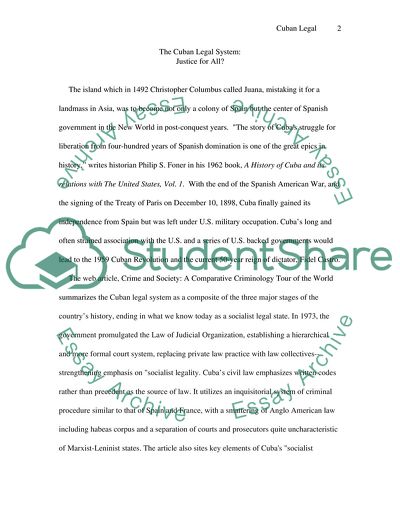Cite this document
(The Cuban Legal System - Justice for All Coursework, n.d.)
The Cuban Legal System - Justice for All Coursework. Retrieved from https://studentshare.org/law/1550309-cuban-legal-system
The Cuban Legal System - Justice for All Coursework. Retrieved from https://studentshare.org/law/1550309-cuban-legal-system
(The Cuban Legal System - Justice for All Coursework)
The Cuban Legal System - Justice for All Coursework. https://studentshare.org/law/1550309-cuban-legal-system.
The Cuban Legal System - Justice for All Coursework. https://studentshare.org/law/1550309-cuban-legal-system.
“The Cuban Legal System - Justice for All Coursework”, n.d. https://studentshare.org/law/1550309-cuban-legal-system.


